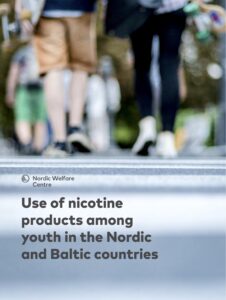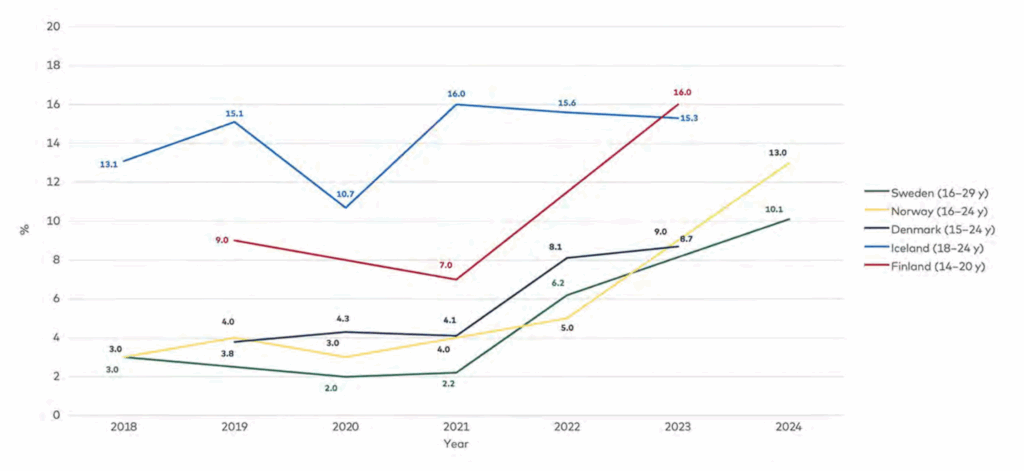World No Tobacco Day: Concerning trends in use of nicotine products among youth in the Nordic and Baltic countries
Nicotine products pose a threat to both individual health and public health. This year’s World No Tobacco Day campaign aims to reveal the strategies employed by the tobacco and nicotine industries to make their harmful products enticing, particularly to youth. As children and young people are especially vulnerable to the harmful effects of nicotine, it is critically important to protect them from becoming addicted to nicotine, regardless of the product.
 The Nordic Welfare Centre report Use of nicotine products among youth in the Nordic and Baltic countries provides an overview of the trends in nicotine product use among youth, as well as regulatory developments from 2018 to 2024 in Denmark, Finland, Iceland, Norway, Sweden and Estonia, Latvia and Lithuania, and implications of the findings.
The Nordic Welfare Centre report Use of nicotine products among youth in the Nordic and Baltic countries provides an overview of the trends in nicotine product use among youth, as well as regulatory developments from 2018 to 2024 in Denmark, Finland, Iceland, Norway, Sweden and Estonia, Latvia and Lithuania, and implications of the findings.
While cigarette smoking continues to decline among youth in most countries, daily and occasional use of e-cigarettes and oral nicotine products has increased significantly in nearly all included countries. The data also shows heightened popularity of new nicotine products among girls. There may be many reasons for this, but in terms of preventive efforts, it is important to investigate in further studies whether it is girls in general, or if there are factors indicating that certain groups of girls use nicotine products to a greater extent than others. Such knowledge will be important for the precision of interventions in future tobacco and nicotine prevention efforts.


Frameworks such as the Tobacco Product Directive (TPD) and the WHO Framework Convention on Tobacco Control (FCTC) make cigarette regulations relatively uniform across the Nordic and Baltic countries. However, regulations for new nicotine products vary markedly. The findings of the report underline the importance of continued strategic political focus on this topic – both within and between countries. Harmonising regulations across the Nordic and Baltic countries could help secure a more unified and proactive approach in preventing the use of new nicotine products among youth.